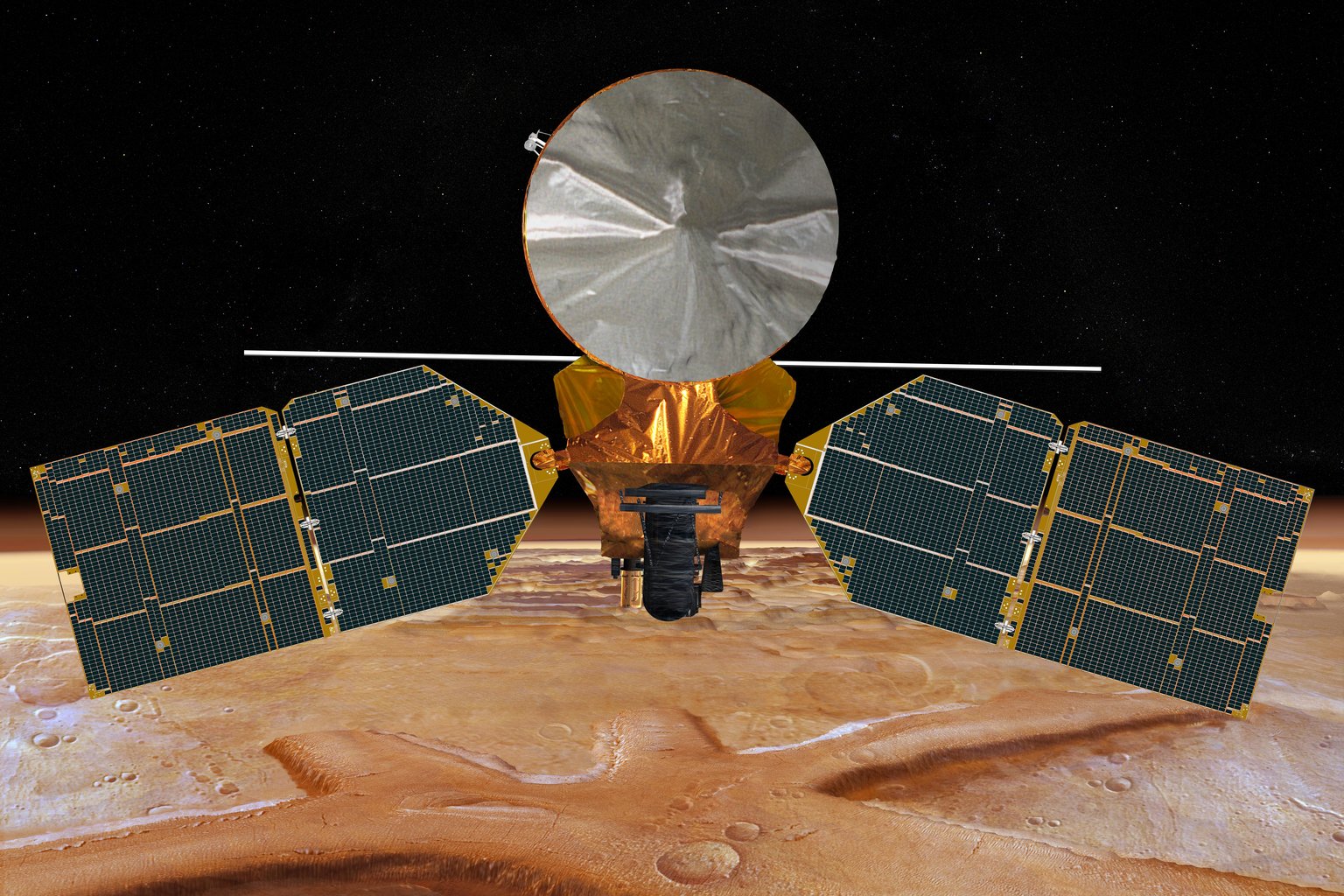How a Helicopter Drone Could Fly on Mars

We've gotten pretty smart at telling rovers what to do when they're working on Mars. NASA has more than a decade's experience in directing these machines on the Red Planet, asking them to image rocks, drill into the surface, or drive over varying surfaces. The Curiosity rover is so smart that in some cases, it can identify targets by itself to analyze.
But rovers have a big limitation: They stay on the ground. Aerial imaging is only available through satellites that orbit several miles above a rover. While this can provide a large overview of the site, it makes it difficult to anticipate what's just over the next hill or crater.
Drones could provide the solution, but there's a problem with them as well. Drones would have to be able to fly autonomously, because there's a several-minute round trip between the time a command is issued on Earth and when it is received on Mars. So a drone has to know when to fly over a hill, or to land when it's low on power; otherwise, the mission could be lost in a moment with a crash.
A new European concept called the Small Mars System (SMS), described in a paper in the journal Ars Astronautica, would use a helicopter drone, among other items, to explore the surface. The European Space Agency funded a feasibility study of the project that concluded in May 2016. The team — led by the Aerospace Laboratory for Innovative Components is hoping to move into Phase A work soon, but that will require more grants to fund specific parts of the system.
SMS would include a package that flies to Mars under the first deployable shield in the history of planetary exploration. Team member Elena Fantino, a research fellow at the Space Studies Institute of Catalonia, explained that it is not a rigid device that stays at the same size. Instead it is retracted during launch and interplanetary transfer and opens when it reaches the upper atmosphere of Mars, she said in an e-mail. This simplifies the technologies needed to bring the package safely to the surface.
The system would also include an aerial drone that will be a technology demonstration of low-altitude flight in the atmosphere of Mars. A secondary objective will be for it to take pictures of the surface during test flights, but the technology demonstration is the main focus.
A dust particle analyzer is another SMS asset. It will provide the first characterization of the dust close to the ground. "The dust is known to play a key role in the climate of Mars, specifically in the interactions between the soil and the atmosphere, the atmospheric circulation and the thermal balance," Fantino said.
Breaking space news, the latest updates on rocket launches, skywatching events and more!
She added that the preliminary research in the study does not included a detailed design of the drone, a project led by Michele Grassi at the University of Naples. Some of the things considered, however, include multi-flight capability, performance, power requirements, communications, the mass and how it will transfer information back to Earth.
"Concerning the multi-mission capability, the main challenge is to demonstrate the feasibility of flying on Mars with a rotorcraft. Indeed, most drone configurations studied for Mars exploration are based on fixed-wing solutions," Fantino added.
RELATED: How to Mitigate the Threat Space Junk on Mars Poses to Future Missions
How the helicopter will be powered is still under investigation. One scenario would have the drone powered by batteries and recharged after each landing. Another suggests that there could be solar panels on the blades that could supplement the batteries, allowing the drone to fly greater distances. The drone will make its own decisions about where to land and how to avoid objects by using a variety of inertial, vision, solar, and pressure sensors.
Fantino said SMS requires no new technology, but the challenge is to figure out what is the best configuration to fly on Mars. Its atmosphere will require a rotor that rotates faster than Earth, with much longer blades. The design — whatever it ends up being — will also need to take into account stowing the drone during the long trip to the Red Planet, meaning that the drone will need to fold and unfold in some way.
Despite the challenges, Fantino said the mission development is only expected to cost 120 million Euros ($131 million), due to the payload's small size and the re-use of current technologies.
Originally published on Seeker.

Elizabeth Howell (she/her), Ph.D., was a staff writer in the spaceflight channel between 2022 and 2024 specializing in Canadian space news. She was contributing writer for Space.com for 10 years from 2012 to 2024. Elizabeth's reporting includes multiple exclusives with the White House, leading world coverage about a lost-and-found space tomato on the International Space Station, witnessing five human spaceflight launches on two continents, flying parabolic, working inside a spacesuit, and participating in a simulated Mars mission. Her latest book, "Why Am I Taller?" (ECW Press, 2022) is co-written with astronaut Dave Williams.

